100th Anniversary Great Nave Tour at the Cathedral of St. John the Divine
Celebrate the 1925 construction of the stunning nave inside the world's largest Gothic cathedral!


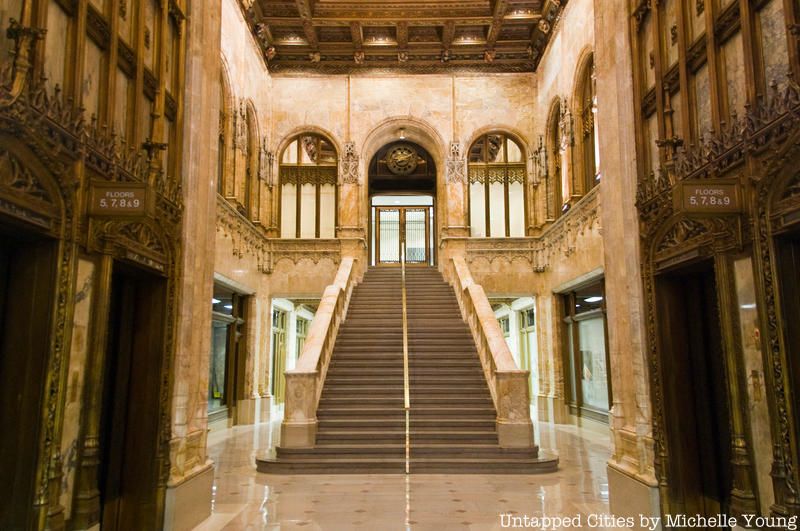
Dubbed the “Cathedral of Commerce” when it debuted in 1913, the Woolworth Building represented an unprecedented feat of engineering and architectural prowess. Rising 792 feet, it was the tallest building in the world when it opened and boasted technology like electricity, steam-powered heating, and Otis elevators—rare at the time. It was commissioned by Frank W. Woolworth, a Gilded Age self-made tycoon who was born a farm boy in upstate New York and made a fortune by opening a chain of “five and dime” stores that catered to the middle class and revolutionized the way Americans shopped.
By the time Woolworth moved to New York City, he had almost 600 stores across the East Coast and Midwest. He hired Cass Gilbert to design his headquarters, instructing him to use the Gothic Revival style inspired by the Houses of Parliament in London, which he admired on a recent trip to Europe. Gilbert, who was experienced at designing buildings in the Beaux-Arts style popular during the Gilded Age, looked to the abbeys of Mont Saint Michel and Saint Ouen in France and the Victoria Tower in London for inspiration. Both the exterior and interior of the building are richly decorated with Gothic motifs and Byzantine-style mosaics.
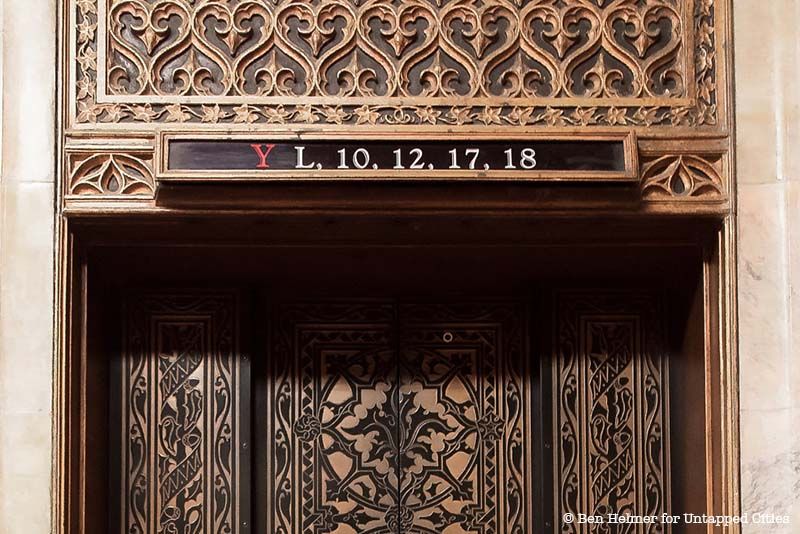
The Woolworth Building used to be powered by coal burners and you can see the enormous undertaking in vintage photographs. At the time of construction, the Woolworth had the tallest chimney in the world. During the course of the building’s renovations, the chimney, which mirrored the height of the building, was demolished and new elevators were later erected in its place to serve the tower’s tenants.
The Woolworth also had the fastest elevators in the world when it opened. The elevator shaft is tapered so that, in the event of a free fall, air cushions will prevent the elevator car from gathering too much speed and plummeting to its doom. Apparently, when the Woolworth was built in 1913, they tested the system by allowing each elevator car to fall.
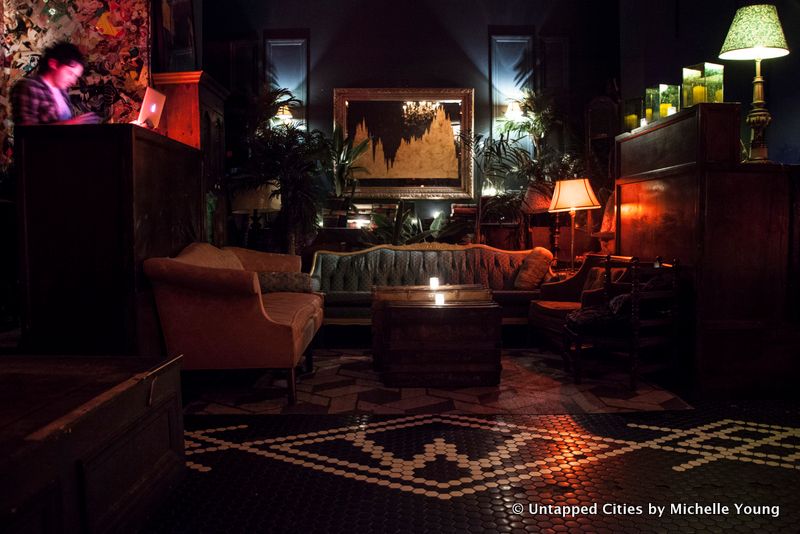
Hidden on the first floor, The Wooly is the Woolworth’s exclusive bar and club, open only for special occasions, but it’s also a great example of 24/7 use. During the day, part of it is used as a kitchen. Obviously not part of Frank Woolworth’s original plans, the Wooly was opened by a brother-in-law duo with a personal collection of vintage items from all over the country. It’s one of the best hidden bars in New York City.
The space is decorated like the set of a Wes Anderson film, with shabby chic sofas, light sconces from the Plaza Hotel, old books, vintage suitcases, authentic period wallpaper, old radios, and original art, including a painting of a wooly mammoth by the mother of one of the owners. The Wooly is currently closed, but in the past has hosted parties for Rag & Bone, H&M, and many others.
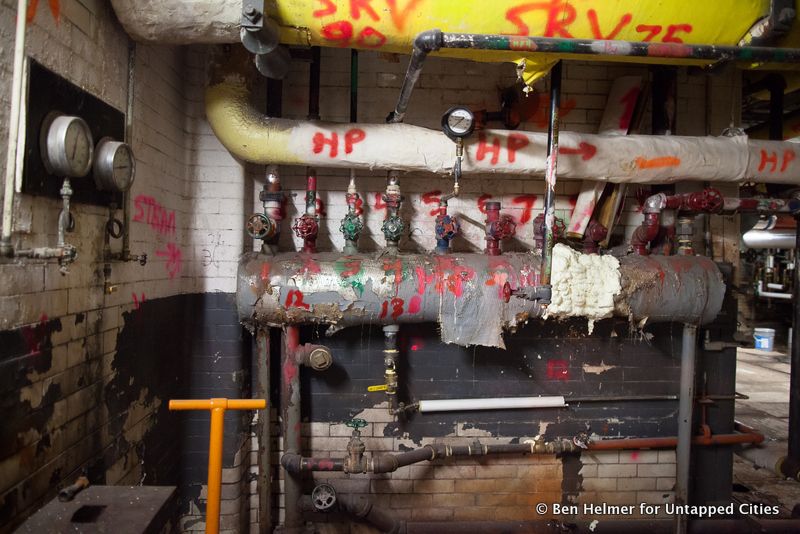
The Woolworth Building’s basement was filled with numerous relics of Woolworth’s attempt to have the building be self-sufficient. An attempt was made to drill through the foundations (which are made up of caissons since the building is located on mud and not bedrock) to reach a fresh water source.
After drilling over 1,500 feet, the drill still had not exited the Manhattan schist, Manhattan’s bedrock. The secondary source of water sought was never found. It is the deepest anyone has ever attempted to drill through the bedrock and it is still used as the minimum depth that the schist reaches.
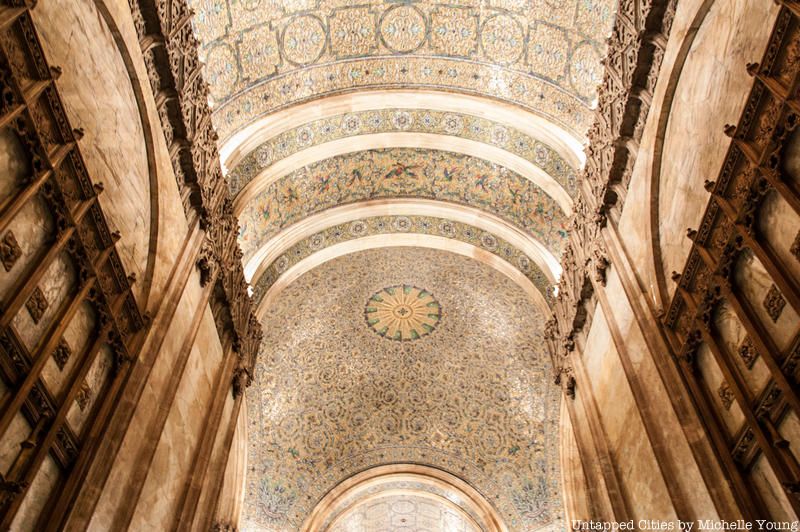
The arcade on the east side of the lobby, with a main entrance on Broadway and alternate entrances at Park Place and Barclay Street, is topped with a two-story high barrel vaulted ceiling covered in shimmering glass mosaic tiles. This dramatic entrance gives one the feeling of entering a house of worship and earned the building the titles of “The Cathedral of Commerce.”
The mosaic work of the ceiling was done by the prominent twentieth century decorating firm of Heineicke and Bowen. The design of floral patterns and exotic birds in colors of blue, green, gold and red are Byzantine in style and reminiscent of early Christian churches found in Italy. In a 1921 brochure for the building, the ceiling is described as
“a flood of dazzling jewels glittering in the sunlight – emeralds, rubies, sapphires, diamonds – a riot of harmonious colors, all spread out in a golden setting, and arranged in exquisite design. The whole effect is one of grandeur with which the arcade of no other building in the world may be compared.”
The glittering effect of the ceiling is due to up-lighting hidden within the “lace-like marble cornice at the springing of the arches.” In the galleries at the northern and southern ends of the arcade’s cross-sections are two murals that depict the allegorical figures of “Commerce” and “Labor,” reinforcing the idea that in this building, its business that is sacred.
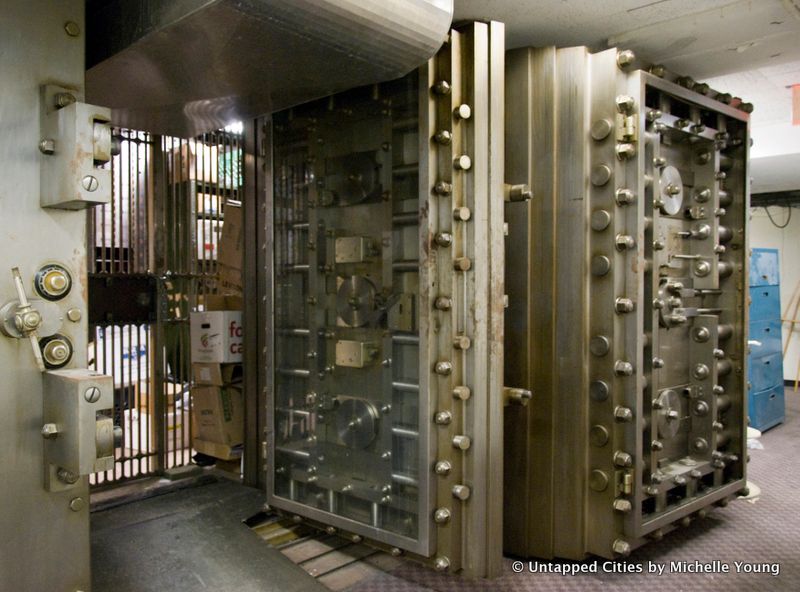
Irving National Bank was the Woolworth Building’s main anchor tenant until relocating to their new headquarters at 1 Wall Street in 1931 (they also changed their name to Irving Trust Company at that time). The bank vault is no longer in use, but still packed to the gills with safety deposit boxes and files.
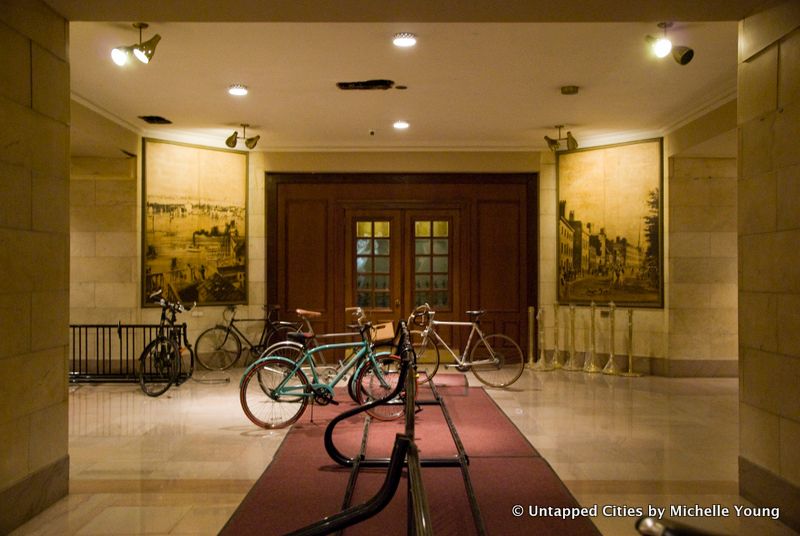
Now closed off, the doors in the bike room area of the basement once led directly into the subway system. According to Woolworth Building tour guide Jason Crowley, the above red doors once led to a “passageway under Broadway to the BMT and IRT subways. The BMT is now the City Hall R stop and the IRT is the now closed off City Hall stop where the 6 turns around.That passageway was completely filled in under Broadway and no longer exists.”
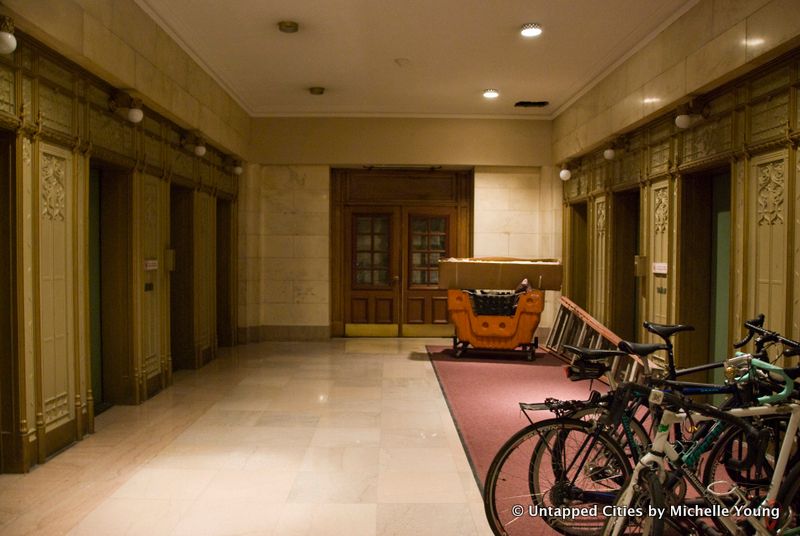
Just to the left, these two smaller red doors once led to a passageway under Park Place to the 2/3 stop. Crowley says, “If you are in that station where the turnstiles are you can still see the former entrance to the passage with metal bars blocking it.”
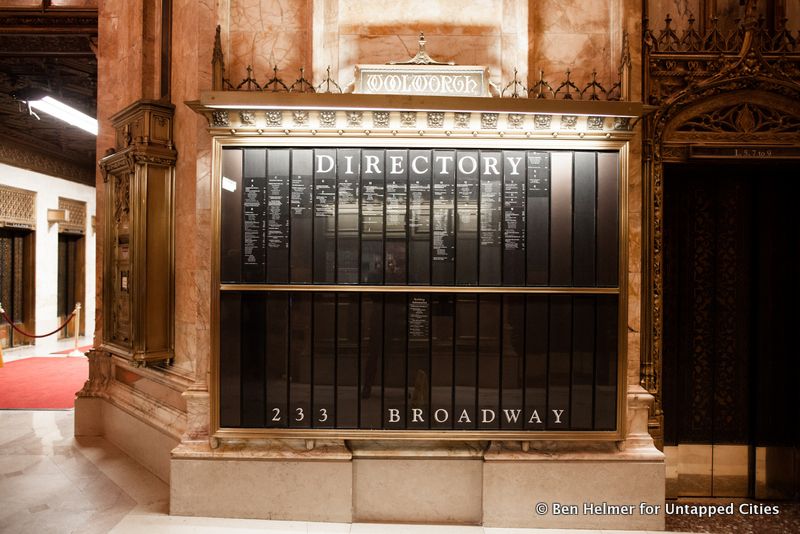
According to Roy Suskin of the Witkoff Group, the real estate development firm that currently owns part of the building, the Woolworth Building was where the Manhattan project managed its payroll and produced false identities.The Atomic Heritage Foundation tells us that the Manhattan Project scientists, including spy Klaus Fuchs, actually worked on uranium enrichment inside the Woolworth Building. It’s indeed one of the places listed in this mapping of Manhattan Project locations in NYC.
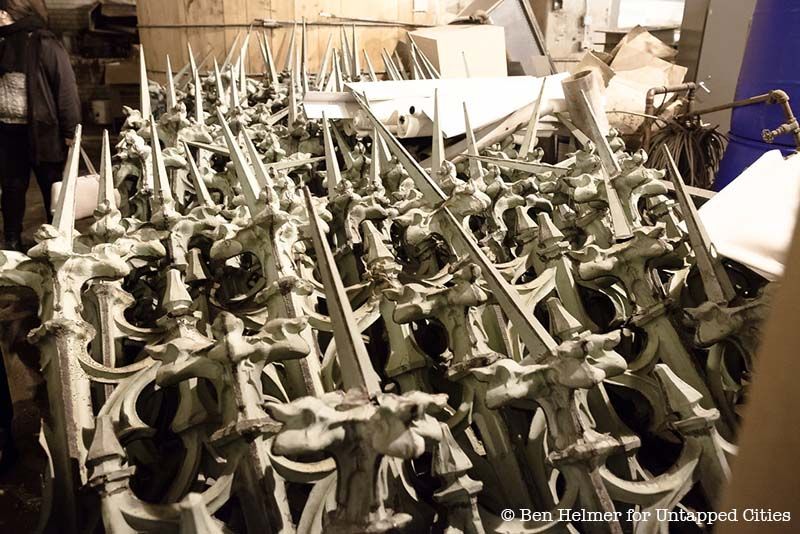
This pile of decorative elements is a treasure trove for antique collectors. Originally at the top of the Woolworth Building, they deteriorated from the elements and starting breaking apart. You can imagine how dangerous it would be if one of the spikes fell the nearly 800 feet from the top onto the street.
One of them is currently being used as a cast in order to create replacement railings for the building and the rest are stored in the former engine room of the Woolworth Building, which once provided power and lighting to the skyscraper.
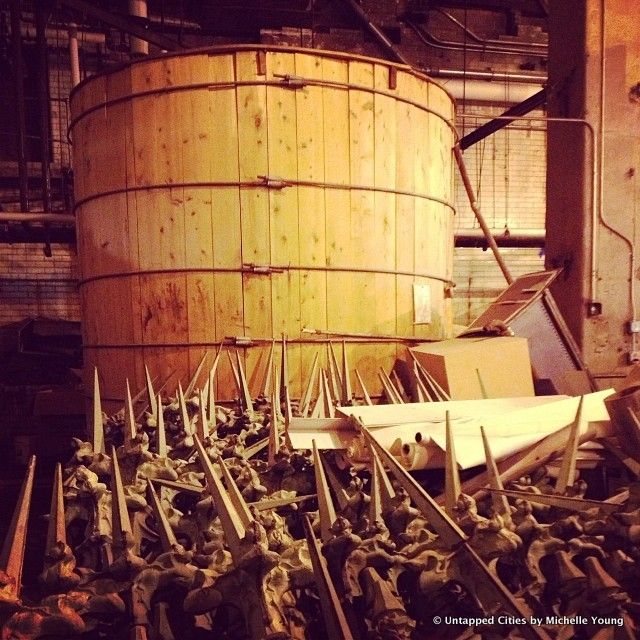
The Woolworth Building was built atop a swamp, so this cedar water tank was added to the basement’s engine room in the 1970s to siphon out water that seeps up into the basement floor. It wasn’t used for long because the minerals from the water basically ate through the pipes. The water tank just sits pretty these days, in good shape protected from exterior elements.
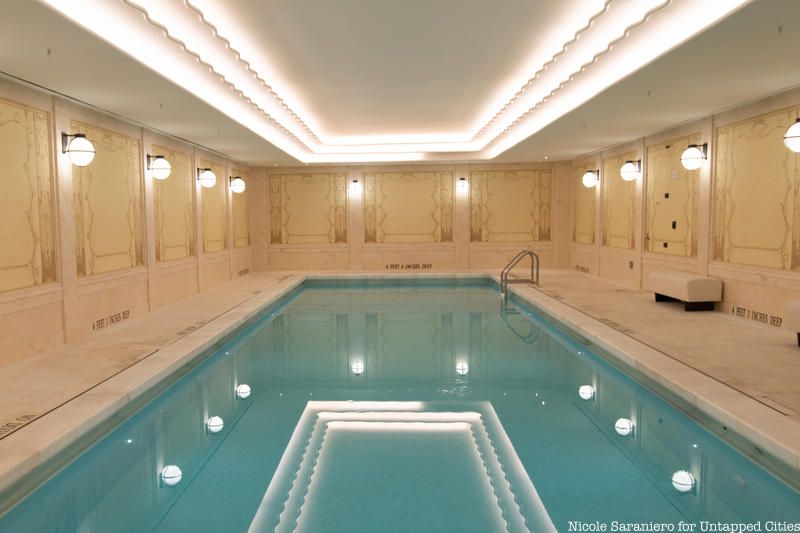
When designing the Woolworth Building in the early 1900s, architect Cass Gilbert and retail magnate Frank Woolworth came up with plans for a Pompeiian pool. The Woolworth Building already had more amenities for tenants than the usual office building at the time, and the luxurious, marble lined pool would have put it over the top. Despite the elaborate designs for the pool, Gilbert and Woolworth’s vision was never fully realized. The pool was built, but the space surrounding it always remained a plain white room without decoration.
For decades, the pool was enjoyed by Woolworth tenants, and even became a Jack LaLane Fitness club. In 1999, the pool was drained and closed off to the public. Today, the pool area has been transformed into a modernized version of Gilbert and Woolworth’s vision to be enjoyed by the tenants of the Woolworth Building’s new luxury residences. The pool is lined with Bisazza Mosaico tiles and is enhanced with an adjacent hot tub, sauna, and changing rooms.
Another fun fact: It’s the second oldest pool in the city, after the one at Teachers College, according to Suskin. Also, the pool contained a drain to allow the water to be used by the building’s fire prevention system as another method to ensure its safety (since it was constructed right after the sinking of the Titanic, which was allegedly unsinkable, Woolworth wanted to ensure that his building truly was impervious).
Nicole Saraniero and Laura Itzkowitz also contributed reporting to this article. Next, read about the top 10 secrets of the Financial District in NYC!
Subscribe to our newsletter